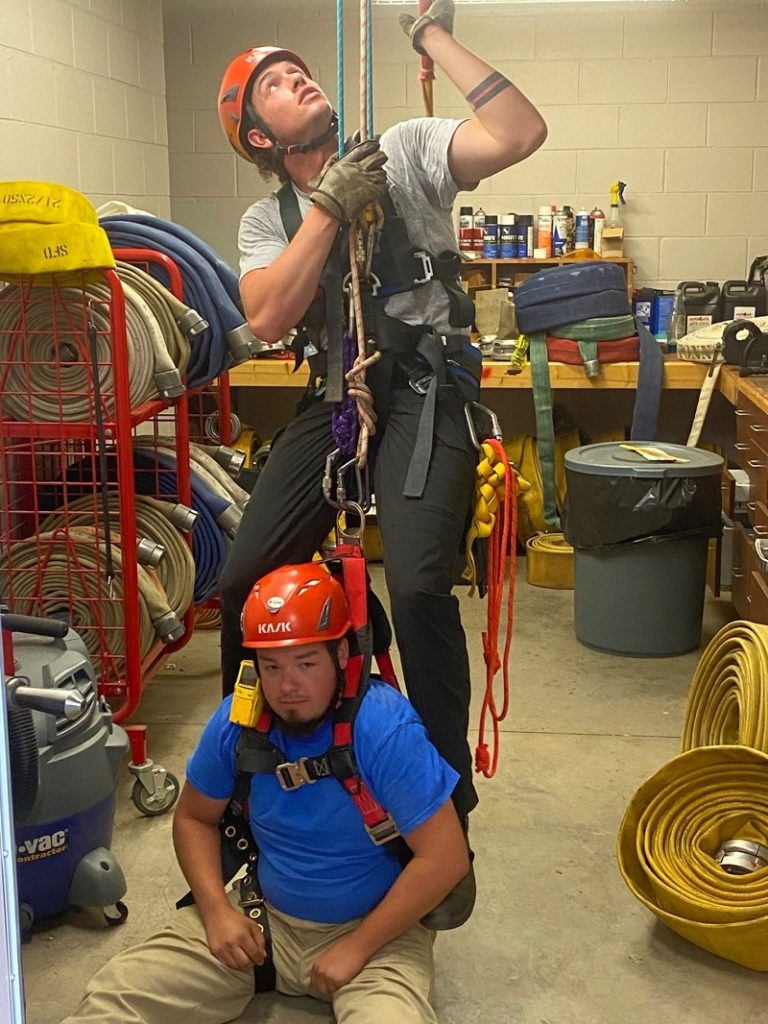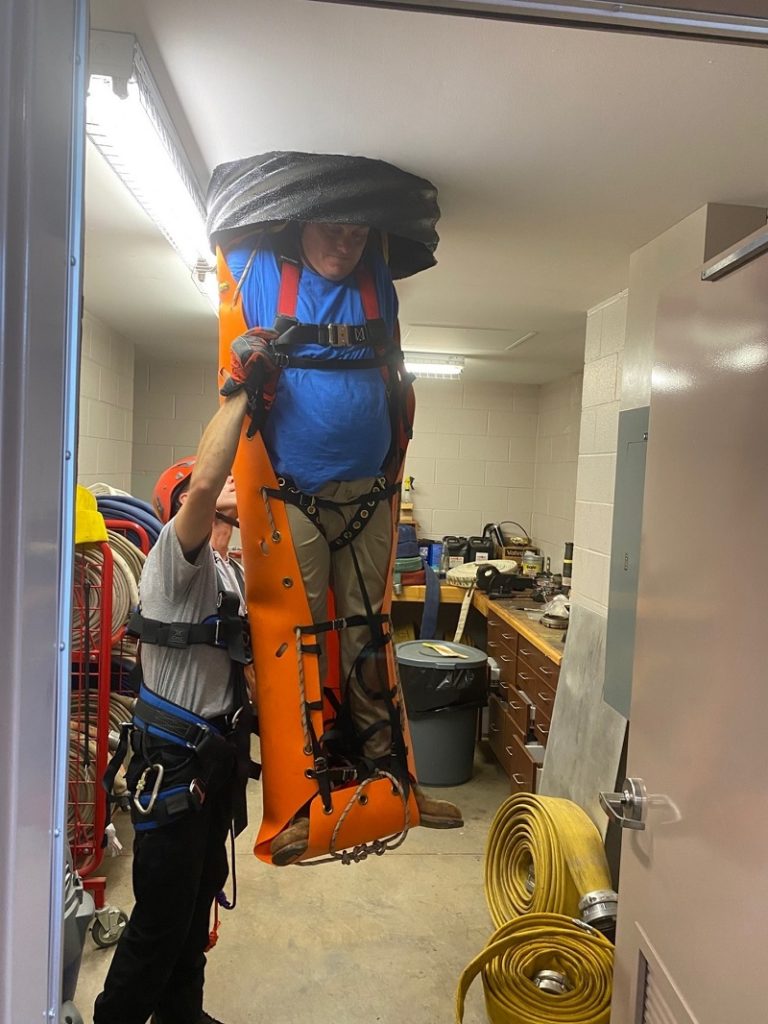
Special to Iredell Free News
The City of Statesville’s Stormwater Department and Fire Department recently conducted a confined space entry and rescue training exercise.
The day-long training, held at Fire Station Four, involved two different scenarios and refined participants’ skills in recovering an unconscious victim that had encountered poison gases and rescuing someone who had fallen and broken an ankle entering a confined space.

George Campbell, the city’s risk manager, organized the training as part of the city’s continued effort to “deliver quality, professional, public services to all residents in our community while ensuring high value with superior results during an emergency situation.”
The SFD has a certified Confined Space Rescue Team (CSRT), but Campbell explained that “the environment which the Statesville Fire Department and Statesville Stormwater Department operates in has evolved, training must evolve with it or we fail!”
The first training scenario involved the recovery of an unconscious victim affected by poison gases in an oxygen-deficient atmosphere where there is a small window of time, typically six minutes, to get someone out; otherwise, the situation evolves from a rescue to a recovery.
The second scenario that the participants encountered was an example of a non-time-sensitive rescue in which someone fell and broke an ankle going into a confined space. In these types of circumstances there are sufficient O2 levels and, therefore, the rescue is not as time-sensitive and can be conducted without the use of supplemental oxygen.
Confined space rescue is a subset of technical rescue operations that involves the rescue and recovery of victims trapped or injured in a confined space or in a place only accessible through confined spaces.
A confined space means the space has limited or restricted means for entry or exit and is not designed for continuous occupancy. Confined spaces include, but are not limited to, tanks, vessels, silos, storage bins, hoppers, vaults, pits, manholes, tunnels, equipment housings, ductwork, pipelines, etc.
Working in confined space can be dangerous for several reasons, many of them invisible or hard to detect, explained Campbell. The most common reasons that working in confined spaces is dangerous are: risks from noxious fumes, reduced oxygen levels; fire risks, flooding/drowning risks, asphyxiation risks, contamination risks; and access difficulties during emergencies.
Many workplaces within the city contain areas that are considered “confined spaces” because while they are not necessarily designed for people, they are large enough for workers to enter and perform certain jobs.
According to Campbell, the City of Statesville does not permit employees into confined spaces until certain criteria are met. To bridge these criteria, the first step is employee training.
OSHA requires initial training and refresher training every three years.
There are a number of hands-on aspects that workers must be fully trained on before they can enter a confined space: ability to recognize and identify any potential hazards that may be associated with confined space entry; familiarity with the evaluation and control procedures for the identified or potential hazards; awareness of the set-up, use and limitations of all the equipment necessary for use inside the confined space area. This equipment may include ventilation equipment, emergency equipment, hazardous energy control equipment and more.
They must also be familiar with the set-up, use and limitations of all of the personal protective equipment (like respirators and full-body harnesses) that they will need to use while they are working inside the confined space; knowledgeable about the Confined Space Hazard Assessment Program’s safe work procedures for entering the confined spaces; aware of the procedures to follow in the event of a potentially dangerous situation, which may be risky towards the worker or in an emergency; familiar with the work that needs to be done in the confined space.




It’s a tough job indeed.